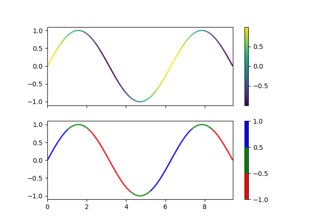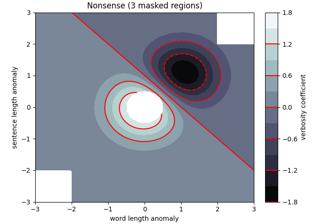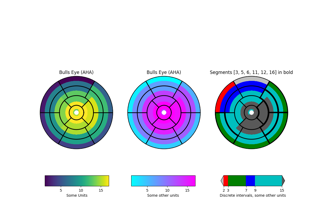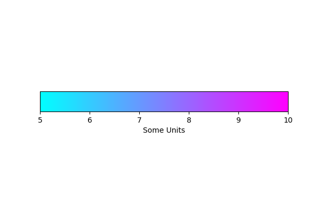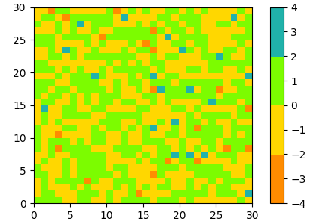matplotlib.colors.Colormap¶
-
class
matplotlib.colors.Colormap(name, N=256)[source]¶ Bases:
objectBaseclass for all scalar to RGBA mappings.
Typically, Colormap instances are used to convert data values (floats) from the interval
[0, 1]to the RGBA color that the respective Colormap represents. For scaling of data into the[0, 1]interval seematplotlib.colors.Normalize. Subclasses ofmatplotlib.cm.ScalarMappablemake heavy use of thisdata -> normalize -> map-to-colorprocessing chain.Parameters: - namestr
The name of the colormap.
- Nint
The number of rgb quantization levels.
-
__call__(self, X, alpha=None, bytes=False)[source]¶ Parameters: - Xfloat or int, ndarray or scalar
The data value(s) to convert to RGBA. For floats, X should be in the interval
[0.0, 1.0]to return the RGBA valuesX*100percent along the Colormap line. For integers, X should be in the interval[0, Colormap.N)to return RGBA values indexed from the Colormap with indexX.- alphafloat, None
Alpha must be a scalar between 0 and 1, or None.
- bytesbool
If False (default), the returned RGBA values will be floats in the interval
[0, 1]otherwise they will be uint8s in the interval[0, 255].
Returns: - Tuple of RGBA values if X is scalar, otherwise an array of
- RGBA values with a shape of
X.shape + (4, ).
-
__dict__= mappingproxy({'__module__': 'matplotlib.colors', '__doc__': '\n Baseclass for all scalar to RGBA mappings.\n\n Typically, Colormap instances are used to convert data values (floats)\n from the interval ``[0, 1]`` to the RGBA color that the respective\n Colormap represents. For scaling of data into the ``[0, 1]`` interval see\n `matplotlib.colors.Normalize`. Subclasses of `matplotlib.cm.ScalarMappable`\n make heavy use of this ``data -> normalize -> map-to-color`` processing\n chain.\n ', '__init__': <function Colormap.__init__>, '__call__': <function Colormap.__call__>, '__copy__': <function Colormap.__copy__>, 'set_bad': <function Colormap.set_bad>, 'set_under': <function Colormap.set_under>, 'set_over': <function Colormap.set_over>, '_set_extremes': <function Colormap._set_extremes>, '_init': <function Colormap._init>, 'is_gray': <function Colormap.is_gray>, '_resample': <function Colormap._resample>, 'reversed': <function Colormap.reversed>, '__dict__': <attribute '__dict__' of 'Colormap' objects>, '__weakref__': <attribute '__weakref__' of 'Colormap' objects>})¶
-
__init__(self, name, N=256)[source]¶ Parameters: - namestr
The name of the colormap.
- Nint
The number of rgb quantization levels.
-
__module__= 'matplotlib.colors'¶
-
__weakref__¶ list of weak references to the object (if defined)
-
colorbar_extend¶ When this colormap exists on a scalar mappable and colorbar_extend is not False, colorbar creation will pick up
colorbar_extendas the default value for theextendkeyword in thematplotlib.colorbar.Colorbarconstructor.
-
reversed(self, name=None)[source]¶ Return a reversed instance of the Colormap.
Note
This function is not implemented for base class.
Parameters: - namestr, optional
The name for the reversed colormap. If it's None the name will be the name of the parent colormap + "_r".
